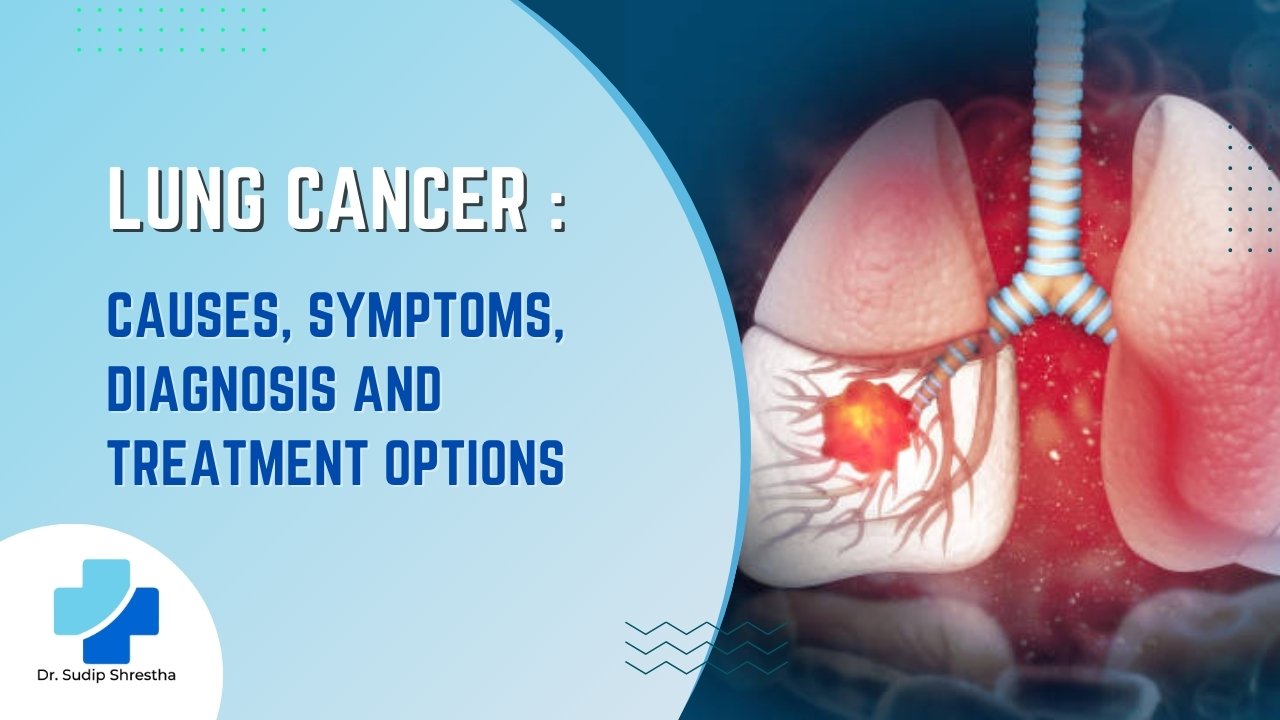Lung cancer remains one of the leading causes of cancer-related deaths globally. In Nepal, experts like Dr. Sudip Shrestha, a renowned oncologist and founder and executive chairman Sr. Consultant Medical Oncologist of the Nepal Cancer Hospital and Research Center, are at the forefront of innovative cancer treatment and patient support. Here’s a comprehensive look at lung cancer’s causes, symptoms, diagnosis, and treatment options, with expert perspectives on improving patient outcomes.
1. Understanding Lung Cancer and Its Causes
Lung cancer begins in the lungs and may spread to other areas if not treated early. This cancer type is primarily linked to smoking, accounting for nearly 80% of lung cancer cases globally. However, non-smokers are also at risk due to factors like:
- Air Pollution: Especially in urban settings, pollution has been found to increase lung cancer risk.
- Radon Exposure: This radioactive gas can seep into homes from the soil and has been linked to lung cancer.
- Secondhand Smoke: Exposure to cigarette smoke, even indirectly, raises the risk.
- Occupational Hazards: Exposure to substances like asbestos, arsenic, and diesel exhaust contributes to lung cancer risk.
According to Dr. Shrestha, preventing exposure to these factors, particularly smoking cessation and air quality management, is crucial in reducing lung cancer prevalence in regions like Nepal, where pollution levels are rising.
2. Recognizing Symptoms of Lung Cancer
Early detection of lung cancer is challenging because symptoms often appear only in advanced stages. Key symptoms include:
- Persistent Cough: This is one of the earliest signs, especially if it doesn’t go away or worsens.
- Chest Pain: Pain in the chest, shoulders, or back unrelated to injury could be a symptom.
- Shortness of Breath: Tumors in the lung can restrict airflow, causing breathlessness.
- Unexplained Weight Loss: Sudden weight loss is often a warning sign of various cancers, including lung cancer.
- Fatigue and Weakness: Unusual tiredness and energy loss are common in advanced stages.
Dr. Shrestha emphasizes that individuals with prolonged exposure to risk factors should seek medical advice if they notice any of these symptoms, as early diagnosis greatly improves treatment outcomes.
3. Diagnosing Lung Cancer
Accurate diagnosis is essential to establish the cancer stage and develop an effective treatment plan. Dr. Shrestha advocates for advanced diagnostic techniques to identify and stage lung cancer precisely. Common methods include:
- Imaging Tests: X-rays, CT scans, and MRIs provide detailed lung images, identifying abnormalities and tumor growth.
- Biopsy: A sample of lung tissue is analyzed to confirm cancer presence.
- Bronchoscopy: A camera-tipped tube is inserted into the lungs to inspect and collect tissue samples.
- Molecular Testing: Identifying genetic mutations in lung cancer cells can help tailor specific treatments, especially in cases of non-small cell lung cancer.
In Nepal, facilities like the Nepal Cancer Hospital are increasingly equipped with advanced technologies, making it easier for specialists like Dr. Shrestha to deliver timely and precise diagnoses.
4. Treatment Options for Lung Cancer
Lung cancer treatment depends on the type and stage of cancer, as well as the patient’s overall health. Common treatment options include:
- Surgery: Removal of cancerous tissue or a part of the lung may be an option for early-stage cancer.
- Radiation Therapy: This method uses high-energy rays to destroy cancer cells and is commonly used for patients who cannot undergo surgery.
- Chemotherapy: Dr. Shrestha and his team use chemotherapy to target and kill cancer cells throughout the body, particularly in advanced cases.
- Targeted Therapy: This approach focuses on specific genetic changes in cancer cells, reducing side effects and increasing efficacy. It is effective in patients with certain genetic profiles.
- Immunotherapy: By boosting the body’s immune response, immunotherapy is beneficial in treating some types of advanced lung cancer. This approach has been groundbreaking in cancer care, with hospitals like the Nepal Cancer Hospital implementing it in their treatment plans.
According to Dr. Shrestha, each patient requires a tailored treatment plan based on their specific condition and needs. Personalized treatment has shown to improve survival rates significantly and reduce recurrence.
5. Prevention and Early Detection
Preventing lung cancer involves minimizing exposure to risk factors, particularly smoking. Dr. Shrestha advocates for lifestyle changes, awareness, and regular screenings, especially for high-risk individuals. Preventive strategies include:
- Quitting Smoking: The single most effective prevention method.
- Reducing Exposure: Limiting exposure to air pollution, secondhand smoke, and hazardous substances.
- Regular Screenings: For people with a history of smoking or exposure to lung cancer risk factors, annual low-dose CT scans can detect cancer early.
Conclusion
Lung cancer remains a challenging diagnosis, but advancements in treatment and early detection can greatly improve survival and quality of life for patients. Dr. Sudip Shrestha’s contributions to cancer care in Nepal reflect a commitment to innovative and patient-centered approaches, particularly through personalized treatment plans and comprehensive care at the Nepal Cancer Hospital. For anyone at risk, understanding the symptoms and taking preventive steps can be lifesaving.




2 thoughts on “Lung Cancer: Causes, Symptoms, Diagnosis, and Treatment Options”